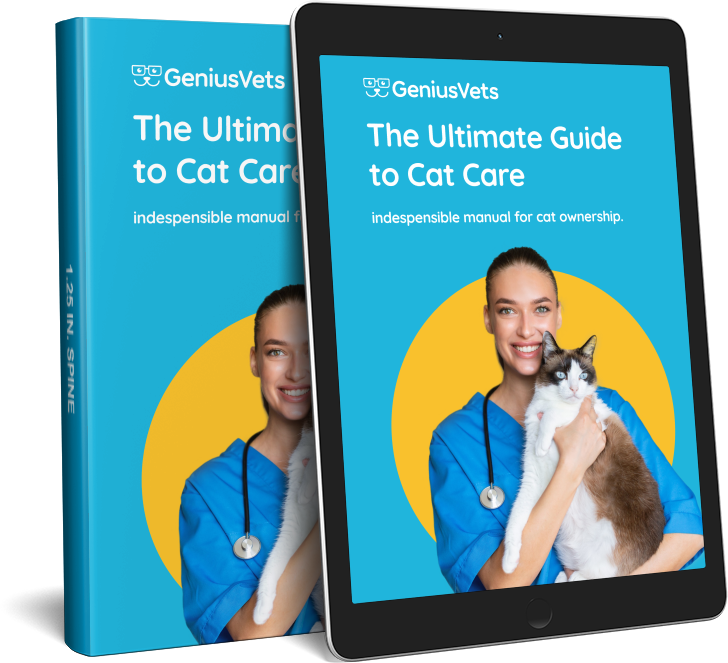Pneumonia is a potentially life-threatening condition characterized by inflammation in the deep lung tissues where oxygen is absorbed, and waste gases are removed from the body. While it's often associated with infectious diseases, pneumonia can have various causes, including:
- Infectious agents: Such as viruses, bacteria, fungi, or parasites.
- Aspiration: Inhaling vomited or regurgitated food.
- Inhalation of smoke or chemicals: Exposure to harmful substances.
- Immune-mediated: Inflammation without infection (eosinophilic infiltration).
Pneumonia can be further categorized based on its original cause, such as fungal, viral, parasitic, bacterial, or allergic pneumonia. In most cases, there is a bacterial component, making bacterial pneumonia a primary focus of management. This article provides insights into managing bacterial pneumonia in cats.
When to Suspect Pneumonia
Identifying pneumonia requires a combination of clinical observations and diagnostic tests:
- Coughing: Although not exclusive to pneumonia, persistent coughing, especially accompanied by other symptoms, can be a sign.
- Fever, listlessness, or appetite loss: These symptoms, in addition to coughing, may raise suspicion.
- Megaesophagus: In dogs with a history of megaesophagus (a dilated esophagus with a high risk of regurgitation), pneumonia should be considered.
- Kittens with severe upper respiratory infections: If standard treatments are ineffective, pneumonia should be investigated.
Chest radiographs (X-rays) are essential for diagnosing pneumonia, but they should be used judiciously. The decision to take chest radiographs is based on a combination of history, clinical examination findings, and response to initial therapies.
Treatment Approaches for Pneumonia
Pneumonia patients may fall into one of three categories: stable, unstable, or critical. The primary goal is to stabilize the patient for home treatment, as pneumonia typically requires several weeks of care. The approach varies depending on the patient's condition:
1. Stable Patients (Treated at Home)
Stable patients exhibit good appetite and activity levels despite coughing and abnormal chest radiographs. They can often be treated at home. The following aspects should be considered:
- Antibiotic Therapy: Once the patient is stable and eating well, they can be discharged with oral antibiotic medication, along with a regimen of physical therapy. Re-check radiographs are scheduled, typically on a weekly basis.
2. Unstable Patients (Require Hospitalization)
Unstable patients are characterized by poor appetite, inactivity, and the need for hospitalization. They need specialized care, including:
- Intravenous Fluid Therapy: Maintaining intravenous fluids helps keep patients hydrated and respiratory secretions moist.
- Antibiotic Therapy: Hospitalized patients usually receive intravenous antibiotics to combat bacterial infections. A combination of antibiotics may be used to target a wide range of bacteria.
- Nebulization: Nebulization involves the use of a nebulizer to create a fine mist of fluid droplets. This mist can carry antibiotics or airway dilators deep into the lungs to treat the infection.
- Physical Therapy: Techniques like coupage, which involves tapping the chest wall to loosen respiratory secretions, and light exercise can help mobilize these secretions.
- Oxygen Therapy: While not typically necessary, oxygen therapy is provided when a patient struggles to breathe adequately. Various methods, such as oxygen cages or nasal oxygen, may be used.
3. Critical Patients (Require Oxygen Support)
Critical patients are unable to get enough oxygen into their systems and may require oxygen therapy and 24-hour care.
Home Care
Patients should be monitored and cared for at home once they exhibit a good appetite and are stable. Key considerations for home care include:
- Avoidance of extreme cold or wet weather: Keep the pet primarily indoors.
- Use of a vaporizer or nebulizer: These devices help moisten respiratory secretions and can carry antibiotics into the lungs.
- Coupage: Perform this tapping technique on the chest wall at least four times daily to mobilize secretions and promote coughing.
- Avoiding cough suppressants: Do not use over-the-counter cough suppressants, as coughing helps remove infected material from the chest.
- Proper antibiotic use: Administer antibiotics as directed by the veterinarian, as treatment regimens have evolved.
- Water intake: Encourage your pet to drink water, possibly by adding broth or water to their food.
- Follow-up radiographs: Schedule re-check radiographs as recommended by your veterinarian to monitor progress.
Pneumonia is a serious condition, and recovery time is typically several weeks. The prognosis depends on the underlying cause, but with appropriate treatment, most patients can recover and regain their health.
Don't have a vet in your area yet? We can help you find a local veterinarian.
If you have more questions, the GeniusVets Telehealth platform will give you unlimited access to text and/or video calls with board-certified veterinarians! To learn more click here.


